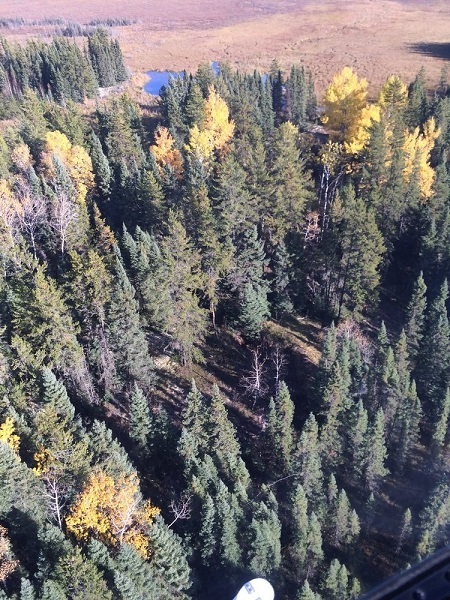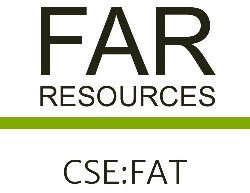Zoro was previously explored and drilled in the 1950s as a source of lithium for ceramics but the property is receiving renewed interest now that lithium is the darling of the lithium-ion battery age that is revolutionising transportation and energy storage.
Far has documented seven pegmatite dykes containing high-grade lithium at Zoro, and recently has expanded the number of dykes with the recognition of a dyke swarm associated with dykes 5 through 7.The increase in the number of dykes has been accomplished by recent prospecting and basic exploration work. “Any new dykes that we discover in these areas will make eventual open pit bulk mining more feasible,” said qualified person Mark Fedikow.
The area where dykes 2, 3, 4, 5, 6 and 7 is located is of interest due to the tighter spacing between them and therefore their potential to be bulk-mineable. FAR’s exploration continues to show potential to increase the number of pegmatite dykes in this area. Chip sampling of dykes 2 and 4 returned Li2O contents of 2.71%, 3.53% and 2.41% and the area will remain a focus for ongoing 2017 field work.
The company will soon have a thorough understanding of dykes #2-7 and an updated 3D model on dyke #1. Drilling at #1 will seek to expand the orebody into areas with no previous drilling and provide information to build a 3D model for dykes #2 through 7. “There are areas with higher grade material in dyke #1 and we want to test the extension of these areas to enhance the possible future resource grade and tonnage,” Fedikow said.
Geologically, the project is within the Canadian Shield and bears similarities to the Whabouchi district in Quebec where Nemaska is working towards starting production soon, and where Critical Elements is building its resource base. These Quebec analogues provide a lead on the potential growth trajectory of the market capitalisation of the company, some C$200 million for Critical Elements and $400 million for Nemaska compared to $24 million for Far.
Earlier in the summer, Far completed its second round of drilling on dyke #1 at Zoro that confirmed extensive lithium mineralisation with results that included 38.3m grading 1.2% Li2O. Pegmatite intersections reflect the historical results as well as those predicted by the three-dimensional model. The Phase 2 drilling programme has given further confidence as to the dimensions and geometry of dyke #1 and the three-dimensional geological model is being updated to include the new drill holes.

Far thinks that an eventual minimum resource of 5-10 million tonnes will be required to build a mine at Zoro. The non-compliant historical resource at dyke #1 hosts 1.8Mt grading 1.4% Li2O but this is expected to increase as modern exploration fully extends and defines the mineralisation. “Dyke #1 has not been extensively drilled below 150m by Far Resources. This opens up significant potential as we find the broadest intersections of mineralisation and highest grades occur at depths down to 300m”.
Drilling will also provide material for initial metallurgical testwork. Visually, the indicators are looking good for Zoro’s spodumene. A 6% spodumene concentrate is the typical product from a hardrock lithium resource and it is what the chemical convertors want for battery production. But having high-grade and low iron material may mean that the company could produce a 7% spodumene concentrate that sells at a premium into the high-end ceramics market. “This spodumene is white to light-green in colour so it will be low in iron. There is not a lot of sulphide or deleterious elements so we have a chance at that,” said Fedikow.
Production scenario
With growing demand for lithium for battery production, production from hard rock deposits has been the quickest to supply the much-needed material. Australia has taken the lead here but the potential supply pipeline in Canada is growing.
Production is relatively straightforward with hard rock operations typically producing a 6% concentrate of the lithium-bearing mineral spodumene. This is the raw material that chemical convertors use to subsequently produce the lithium carbonate or lithium hydroxide that battery companies need.
Here is where the Zoro location can provide several advantages with its close proximity to all the required infrastructure: the powerline is only 4km from the site; an all-season road and an airport are just 11km away; and the railway is 34km from the site. Any future mine development can proceed without major expenditure on this critical infrastructure. This means that concentrate can be shipped to Canada’s West Coast ports for shipment to Asia. There may also be the possibility of supplying material to the plant Nemaska is developing in Shawinigan. Conscious of the importance of infrastructure, the company will upgrade site access points in order to move material from site.
Furthermore, Manitoba is rated the sixth best jurisdiction for mining in Mining Journal Intelligence’s forthcoming World Risk Report.
FAR Resources– at a glance
HEAD OFFICE: 201-2691 Viscount Way, Richmond, BC V6V 2R5, Canada Telephone: +1 604 805 5035 Email: info@farresources.com Web: www.farresources.com DIRECTORS: Keith Anderson, Lindsay Bottomer, Shastri Ramnath, Cyrus Driver, Frank Anderson and Jeremy Ross. QUOTED SHARES ON ISSUE: 81.3 million MARKET CAP (at July 31, 2017): C$20.7 million
|


























